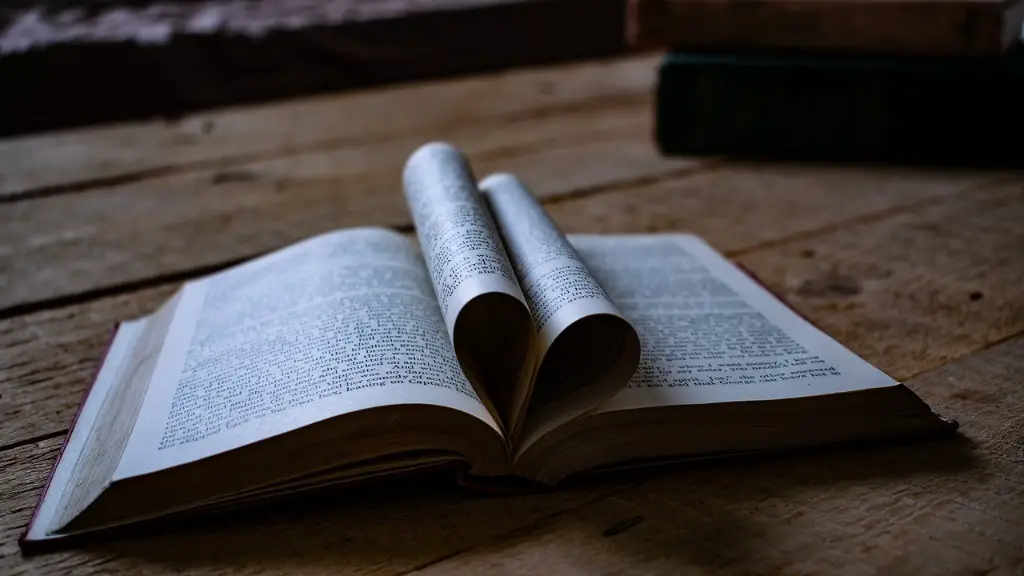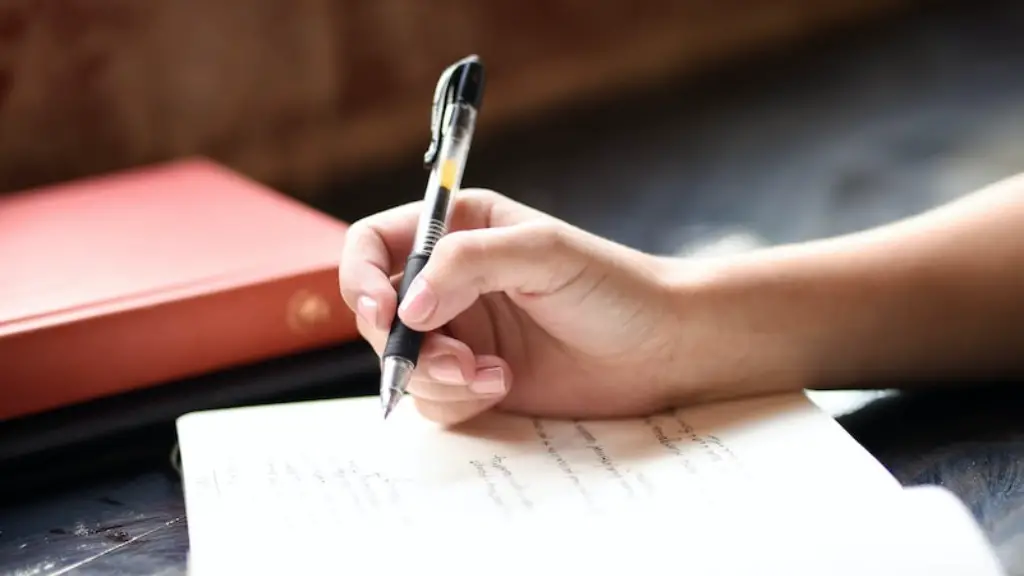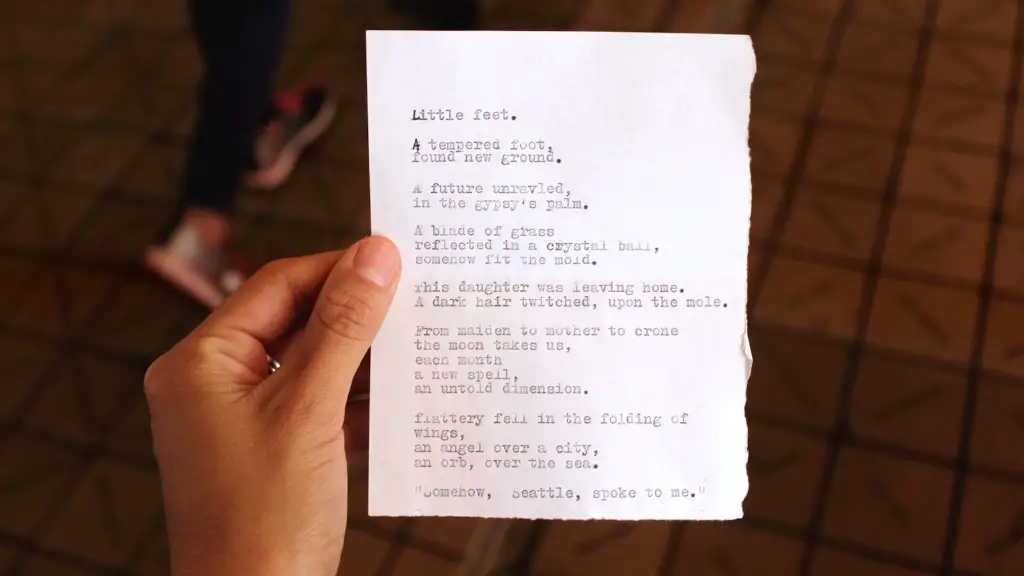What Are the Elements Of Poetry?
In poetry, the words we use to convey a certain emotion, feeling, or story gain deeper meaning simply by the way they’re arranged and read. Using poetic elements such as sound, symbols, and figures of speech, poetry provides a window into the heart, soul, and ideas of the poet. To understand and fully appreciate a poem, it is essential to view its individual components –setting, structure, and elements.
Structure of a Poem
In poetry, structure serves to convey either a basic form or a poetic device. The latter is typically employed to emphasize the overall effect of a poem’s message, theme, or to convey a specific feeling. The structure of a poem can take many shapes. A few of the most common poetic structures in English are: iambic pentameter; sonnets (traditional poetry written in iambic pentameter and of a definite, fixed form); quatrains (four-line stanzas, often rhyming ABAB); ballads (narrative poems with content semi-sensible and often featuring tragic situations and characters); and other lyrical forms.
Elements of Poetry
A poem’s elements tie all sections of the poem together and help give it meaning and an engaging story or sentiment. These elements also provide an aesthetic balance and support to any poem. Below is a list of some common elements of poetry that may appear in a piece of poetry:
Rhythm:
Rhythm is established by stressed and unstressed syllables and creates a musical voice when reading the text aloud. Rhythm can also be thought of as the beat that often accompanies a piece of spoken word poetry.
Rhyme:
Though not always occurring in poems, rhyme is the comparison of two words, either in the same line or in two separate lines, that share the same sound. The higher the rhyme density, the more melodic and pleasant the poem is to read.
Imagery:
Imagery is one of the most powerful of all poetic elements, capable of conveying detailed pictures of ideas and emotions. Such pictures create clear mental images in the minds of the readers and evoke their emotions.
Figures of Speech:
Figures of speech are words or phrases written to express emotions, ideas, and sensations in an uncommon and unexpected way. Common figures of speech such as simile, metaphor, hyperbole, imagery, and personification can create vivid images and set up powerful emotions in readers.
Symbolism:
Symbolism, the practice of attributing particular meanings or interpretations to objects or ideas, is an effective way of conveying a deeper meaning in a poem. Such symbols can be either physical objects or abstract ideas which represent abstract or emotional concepts.
Alliteration:
Alliteration is the repetition of initial or stressed consonant sounds in two or more words. This notably increases the poeticality and expressivity of a poem by creating a rhythm or melody, which can amplify the emotions that a poem expresses through the repetitious sounds.
Types of Poetry
Narrative Poetry:
Narrative poetry is a collection of stanzas that tell a story, similar to a short story. The story is typically written in verse and often has an epic quality to it. This type of poetry is often used to depict the struggles and emotions of life, but it may also be used to tell a tale of romance, a war story, or a mythological saga.
Lyric Poetry:
Lyric poetry is a type of poetry that communicates the poet’s feelings or thoughts about a certain experience, idea, or emotion. These thoughts and feelings may be conveyed in a lyrical prose or in rhyming couplets. It is one of the most popular genres of poetry that is written in the present day.
Haiku Poetry:
Haiku is a type of Japanese poetry that is usually written in three lines. Each line consists of a fixed number of syllables. The first line of a haiku contains five syllables, the second line consists of seven syllables, and the third line contains five syllables. This specific structure is called the “5-7-5” syllable pattern. Haiku focuses on the author’s feelings or observations about a single moment of something in nature.
Limerick Poetry:
Limerick poetry is a type of poetry that is often humorous and is characterized by a specific meter, which follows a pattern of aabba. The lines are typically lighthearted and are often used to tell jokes or make fun of someone. The meter of a limerick is used to create a humorous, sing-song effect in the poem.
Sonnet Poetry:
The sonnet is perhaps the most recognizable poetic form in the world. Traditionally written in iambic pentameter and consisting of fourteen lines divided into three quatrains and a final couplet, the sonnet is often used to tackle a range of emotions and challenges.
The Significance of Poetry
Poetry has long been thought of as the language of the soul and has been used to express a wide range of emotions and ideas. It can be as vibrant and creative as the author wishes, or it can also be a direct, honest expression of feelings. Poetry often serves to emotionally transport the reader to a different realm, allowing them to experience vivid emotions and stories that can be hard to impart using simple prose.
On a more philosophical level, poetry can provide a unique, and often revelatory, insight into the human condition. By using two of its core elements – imagery and symbolism – poetry can create a vivid and powerful connection between the author and their reader. Through this connection, readers can gain a better understanding of the complexities, both psychological and social, of being human.
The Power of Poetry
Poetry has a power to influence and change the world. By speaking directly to the heart, it can spark empathy, create awareness, and mobilize people to action. Throughout history, poets have used their craft to challenge the status quo, and often had an unprecedented influence on their society. Poets such as Langston Hughes, Maya Angelou, and Sylvia Plath are often credited with ushering in a new era of thought and understanding in their respective eras.
The power of poetry lies in its ability to convey emotion. It has the capacity to convey feelings and ideas that are difficult to articulate with words, allowing us to connect with the innermost depths of our psyche. Poetry can express our deepest sorrows and successes, shedding light on experiences and feelings that we often struggle to express. Reading the work of renowned and influential poets can allow us to not only understand the human experience better, but also to unlock our own creative potential.
The Impact of Poetry
Poetry often has a profound effect on the reader’s emotions. By transcending the physical realm of language and language barriers, poetic stories can bring a serenity and solace to the reader. Whether it be the vulnerability of a war survivor, the passion of a lover, or the joy of a new parent, the stories being told in poetry have the potential to touch our souls in a way prose could never do.
On a larger scale, poetry can have a penetrating cultural impact, breaking down political and social barriers. By offering deeply personal insights, poets have often been able to influence the direction of their societies. They are often the most powerful reflection of what society is thinking, saying, and feeling at any given moment. From turning points in civil rights, to the fight for gender equality, to calls for immigration reform, poets have often served as the voice of reason and progress in their respective societies.
Conclusion
Poetry is a powerful and emotionally engaging form of literature that can be used to convey a range of ideas, feelings, and stories. It can provide us with vivid images and experiences that words alone simply cannot. Across cultures, throughout history, and up to the present day, poets have used the elements of poetry to reveal the truths, experiences, and emotions of the human experience. It is clear that poetry is a vital and profoundly influential form of expression that has the potential to impact and change the world.




